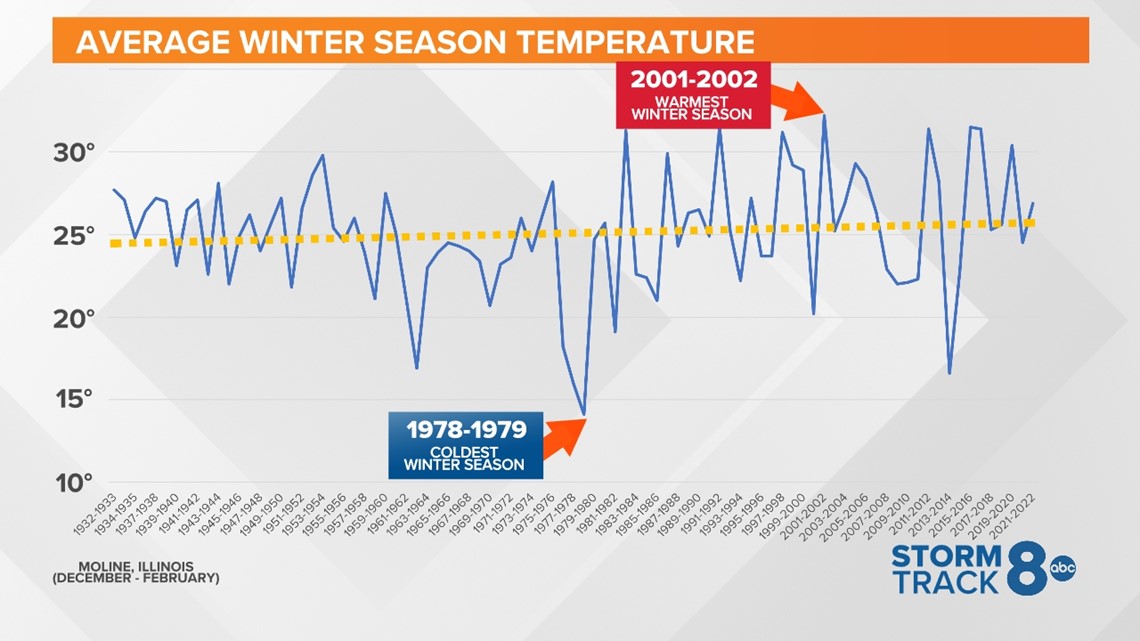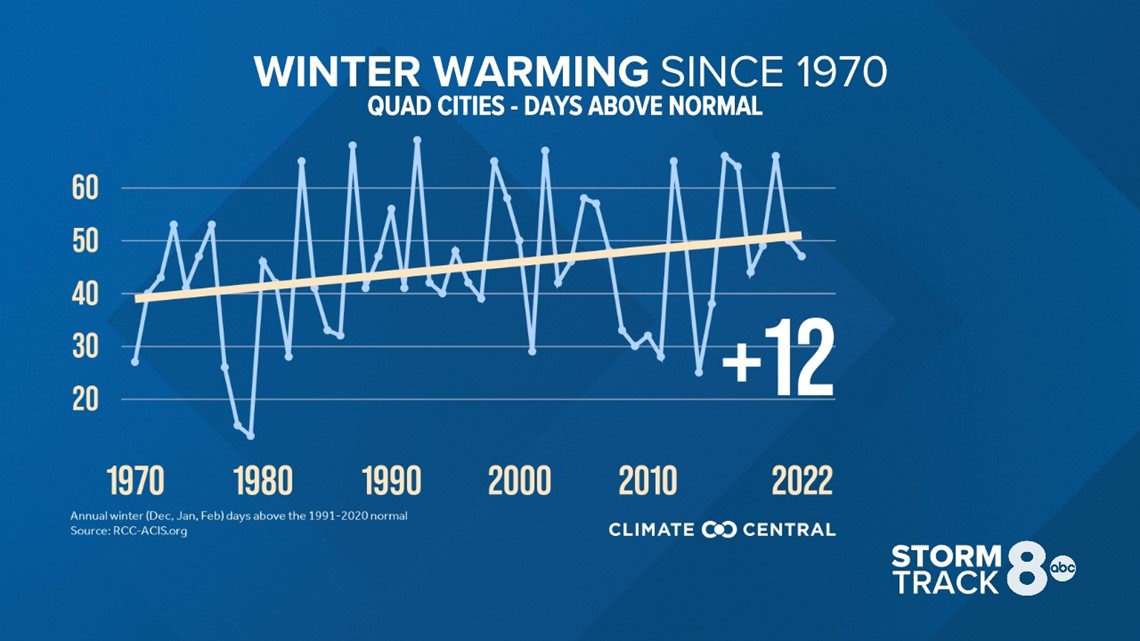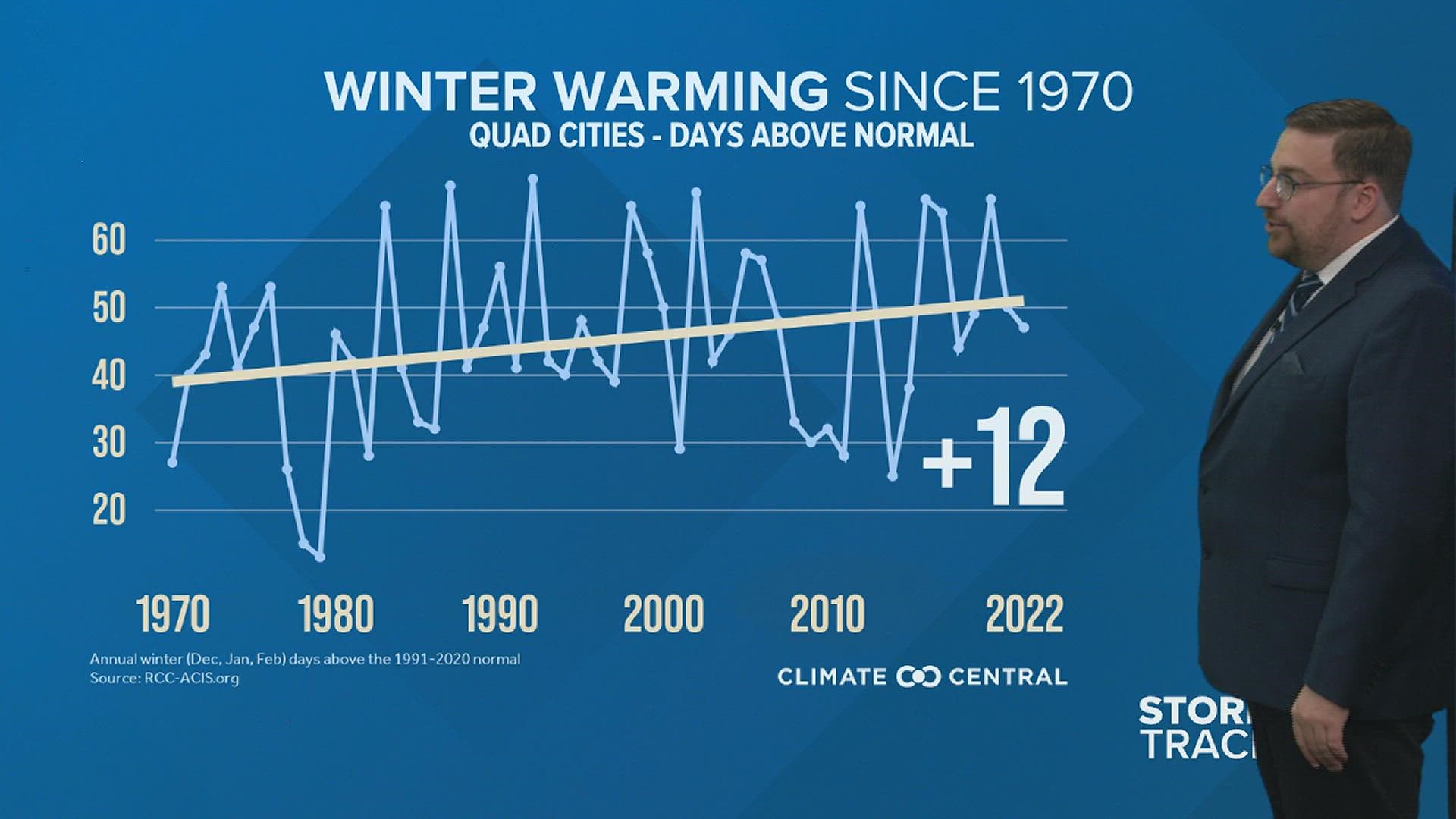MOLINE, Ill. — The winter season is in full swing and while we are waiting for our first really big snowfall, we haven't had to wait nearly as long for the colder days as nights.
Paul from Cambridge, Illinois asks:
"Are winters in the Quad Cities getting warmer?"
The resounding answer is, yes!
We have access to winter season temperature data dating back to the early 1930s. Since then, we've seen a slight increase in the average winter season, but more notably, a bigger increase in the number of days we experience "Above average" temperatures. Nearly two weeks' worth!
In the graph below, the yellow trend line represents the rate of change. While it isn't dramatic, it is indeed increasing over time.


Just because the winter season itself is experiencing more warmth compared to decades past doesn't mean we are not seeing those really, really, cold spells.
Remember the winter of 2019 when Illinois logged the coldest temperature on record for the state? A bone-chilling -38° in Mount Carroll, and that doesn't include the wind chill!
Single events like this don't have much of an impact on the overall average unless they are prolonged events lasting several days or weeks.


The more noticeable difference is the change in above-average days or days when the temperature exceeds the long-running average. Since 1970, the Quad Cities is experiencing nearly two more weeks of above-average temperatures. That means an overall shorter and more compact winter season compared to previous decades.
Another huge factor when calculating the average winter season is the amount of snowfall. Typically, in very snowy years, you'll see much colder temperature readings for that particular season since the snow acts as a refrigerator. It also has an extremely high Albedo, meaning it reflects a lot of the incoming energy from the sun, keeping temperatures cold. The January 31, 2019, extreme cold scenario is a good example of this. Snow was present on the ground, helping those temperatures sink to new record levels.
Have a question you would like me to answer in an upcoming "Ask Andrew" segment? Submit it, here!

